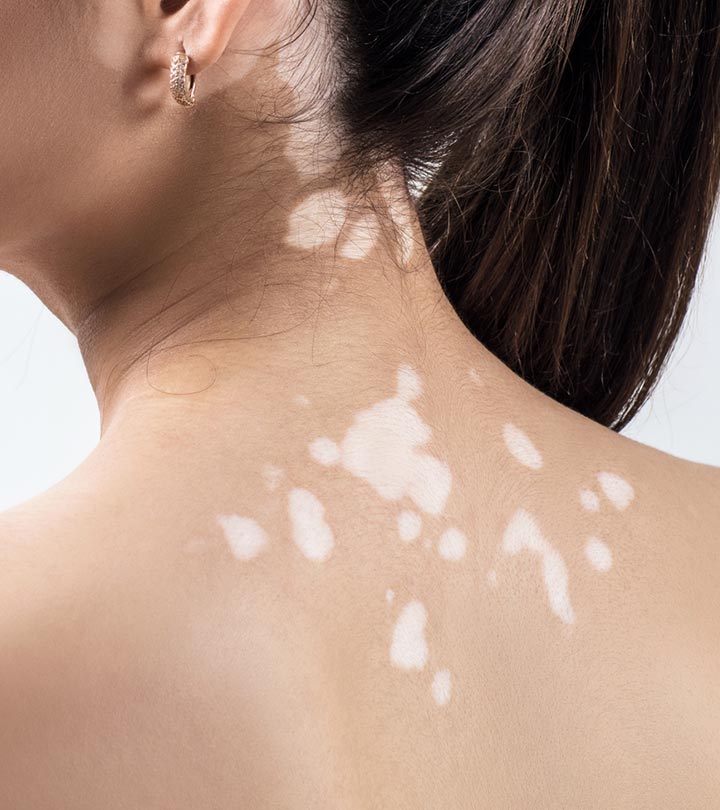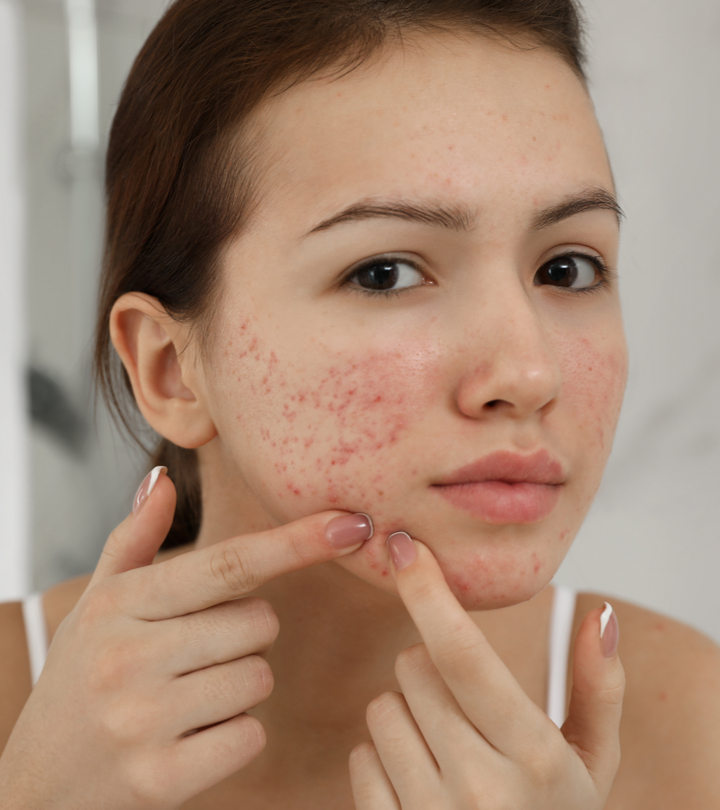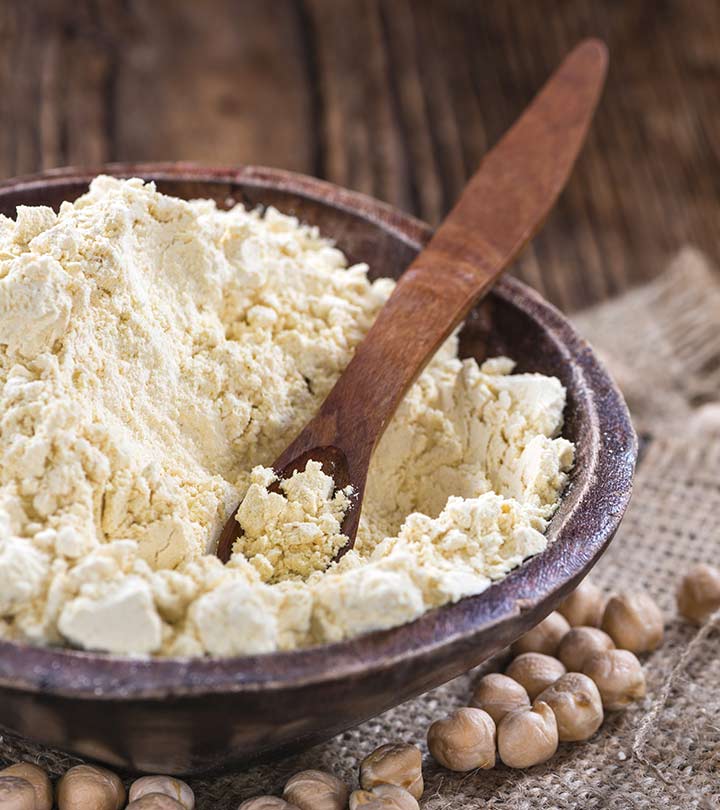White spots on skin is a very common concern and can sometimes be a cause for worry. Several factors may cause white spots on the skin. If you are here because you have recently noticed any such spots and don’t know the reason, we can help you. Understanding the causes is crucial before you opt for a treatment method.
This article explains the different forms of white spots you may notice on your skin, their causes, treatment options, and prevention tips. Scroll down to read more.
In This Article
What Are White Spots?
White spots are patches of of hypopigmented or depigmented depigmented skin present on the face or any other part of the body. These spots can appear in several forms ranging from a tiny cluster of dots to patches covering a larger surface. Though they typically are not a cause of concern, you should visit a dermatologist as and when the issue arises.
Various factors could cause white spots on your skin. Read the next section to find out what they are.
What Causes White Spots On Your Skin?
Shutterstock
1. Idiopathic Guttate Hypomelanosis Or Sunspots
Sunspots are a cluster of white spots occurring on the skin due to excess sun exposure. These white spots typically occur on the legs before making an appearance on the arms, back, and the face. They are more prominent in light to olive-skinned women over the age of 40 (1). This condition generally runs in families and is hereditary.
White sunspots are usually harmless and are not a symptom of any disease.
Related: 10 Best Home Remedies For Sunspots, Causes, And Treatments
2. Tinea Versicolor
Tinea versicolor is a skin condition caused by the overgrowth of microscopic yeast (known as Malassezia) on one’s skin (2). While more research needs to be conducted, potential causes of tinea versicolor include:
- Oily skin
- A weak immune system
- Warm, humid conditions
- Excessive sweating
Teenagers and other individuals living in tropical climates are more susceptible to tinea versicolor. The white spots typically occur on the back, neck, and the trunk. They may also appear in shades of red, pink, and brown. These tiny white spots may increase in size over time. They are accompanied by:
- Dryness
- Scaling
- Itching
This condition tends to recur and generally resolves without any permanent discoloration.
Related: How To Get Rid Of Tinea Versicolor – 15 Home Remedies To TryStylecraze TriviaTinea versicolor is also called pityriasis versicolor and mycosis. It also has the nickname “beach mycosis” because the white spots look more defined after sun tanning.
3. Vitiligo
This is an autoimmune skin condition that occurs when the body’s immune system attacks melanocytes, which are cells that produce skin color (3). One may observe large white spots on their hands, knees, and genitals. In certain cases, this issue may also affect the areas with mucous membranes, like the inside of one’s nose and mouth.
Related: Vitiligo Diet – What Is It & How Does It Help Treat Vitiligo?
4. Nutritional Deficiencies
The diet you follow may also affect skin health. While more studies are warranted, many believe that diets lacking vitamin D, vitamin E, and calcium may cause white spots on one’s face and body.
Rare Causes Of White Spots
1. Tuberous Sclerosis
This is also called the Bourneville disease. It causes white spots that are scattered all over the skin. Tuberous sclerosis affects people of all ages but is more commonly experienced by infants and children below the age of six (4).
But it could be a serious condition that also may cause tumors (non-cancerous) to grow in the brain, and on kidneys, heart, eyes, or skin. It can also be found as a part of the neurological conditions.
2. Lichen Sclerosis
Shutterstock
This is an extremely rare type of white spot disease and is typically experienced by people of every age group.
This problem appears in women in the form of white patches around the anus and vulva region (5). Men, on the other hand, may experience this issue on the foreskin of their penis. These patches can also be found on other parts of the body.
While mild cases may not showcase any other symptoms, moderate to severe cases may manifest as:
- Severe itching
- Burning sensation during urination
- Weak skin that tears or bruises easily
- Bleeding
- Blistering
- Painful intercourse
Visit a dermatologist immediately if you experience any of these symptoms.
3. Eczema
Shutterstock
Eczema is a lifelong condition that typically begins before the age of five. Interestingly, people with secondary conditions like hay fever are more susceptible to it.
This disease is generally characterized by small red, itchy patches and raised bumps. In certain cases, these symptoms may also be accompanied by white spots on the body.
The most commonly affected areas include:
- Scalp
- Eyelids
- Elbows
- Wrists
- Feet
- Hands
- Face
- The back of the knees
The rashes and white spots on the skin are mainly defined by their itchiness, especially at night. These areas, when scratched, can result in open, leaky sores. The affected areas can eventually become thick, dry, scaly, and difficult to remove if not treated immediately.
The white spot disease is often chronic and may develop time and again without any obvious pattern.
Serious Causes Of White Spots On Skin
In very rare cases, the appearance of white spots or white lumps may be a sign of skin cancer. However, more research is warranted in this regard. Visit your dermatologist if the spots do not disappear after a few days.
Subscribe
Now that you know the different causes of white spots on the skin, let us look at the various symptoms that could accompany this issue.
Symptoms That Generally Accompany White Spots On Your Skin
Shutterstock
White spots on the body more often tend to indicate a larger underlying issue. The individual is likely to experience one or more of the following symptoms:
- A burning sensation
- Tenderness of the skin
- Allergic reactions (angry boils, red skin, itchy skin)
- A change in the feeling of the skin
- Dry skin around the affected area
- Peeling skin
- Increased body temperature around the area
- Swelling
While all the symptoms mentioned above warrant a doctor’s visit, the symptoms listed below require immediate medical attention as they may indicate an extreme health issue.
- An asthma attack (characterized by suffocation or difficulty breathing)
- Sudden or extreme swelling around the face, lips, and throat
Any medical issue may cause various health complications in the future if not treated in a timely and appropriate manner. The same could hold true for white spots too. Read the next segment to find out more.
What Complications Can White Skin Spots Cause?
Shutterstock
Tiny white spots by themselves are harmless and do not cause any long-term issues. Treatment for autoimmune conditions like vitiligo is necessary to prevent the spread. We have discussed them below.
1. Skin Cancer
Untreated white pigment spots on the skin, especially depigmented patches like vitiligo, may increase the risk of skin cancer. Such white spots could signal a lack of melanin in the skin. Melanin protects the skin from the harmful rays of the sun (6). But do note that the probability of an individual with vitiligo developing skin cancer is quite low.
2. Autoimmune Disease
This is one of the more prominent complications that could occur in tandem with vitiligo (7). Generally speaking, vitiligo cannot cause an autoimmune disease. However, individuals with vitiligo could be at a higher risk of developing autoimmune diseases. These include:
- Rheumatoid arthritis
- Psoriasis
- Pernicious anemia
- Systemic lupus erythematosus
- Autoimmune thyroid disease
- Type 1 diabetes
- Addison’s disease
3. Mental Health Issues
While the tiny round white spots on the skin can be ignored, large white patches (like those caused by vitiligo) are extremely noticeable.
Such spots present on uncovered areas like the face and forearms may hurt an individual’s self-confidence and self-esteem. This may also lead to mental health concerns like anxiety and depression.
While these complications are quite serious, they are relatively rare and can be prevented if treated on time. Let us look at the treatment options for white skin spots in the next section.
Treatment Options For White Spots On The Skin
Here, we have listed the different treatment options available for the different types of white spots. Take a look.
1. Idiopathic Guttate Hypomelanosis Or Sunspots
The first step to treating such sunspots is limiting exposure. While this may cure the spots, it will prevent further damage.
Other treatment options include:
- Topical Creams
These are prescription creams that lighten the skin around the white sunspots. This enables the white spots to seamlessly blend into the skin. Other creams containing l-ascorbic acid (vitamin C), glycolic acids, corticosteroids, retinoids, and azelaic acid were found to help in the treatment of similar (brown) spots (8).
- Dermabrasion
Dermatologists may recommend dermabrasion in some cases to remove the white spots caused by sunburns. The process involves a diamond wheel or wired brush with rough edges that sands down the top layer of the skin (9). This is done to bruise the skin and initiate the healing process.
- IPL (Intense Pulsed Light) Treatment
This is a non-invasive procedure that uses high-intensity pulses of visible light to injure the skin’s dermis. It may trigger the production of new collagen and may result in an even complexion. However, more research is warranted in this regard.
- Laser Treatment
This procedure is similar to that of the IPL treatment. However, while IPL may use a combination of filters, the laser treatment uses a single wavelength of light. This treatment is currently available as ablative (targeting and removing the top skin layer) and non-ablative treatments (targeting and damaging deeper layers of the skin with heat).
2. Tinea Versicolor
The white spots and other symptoms related to this skin issue tend to disappear on their own during winters. However, they may recur in the summers when the temperature is hot or humid.
You may prevent their recurrence by using over-the-counter (OTC) anti-fungal products (10). These topical products effectively eliminate the white spots by reducing the amount of yeast present on the skin. The most commonly used products are:
- Ketoconazole
- Miconazole
- Clotrimazole
- Selenium sulfide
Do note that these drugs act slow and may show results only after months of continuous use. The fungal colonization decreases, but it may take a long time for color to come back. But consult your local dermatologist when you don’t find a difference even after using them for months.
3. Vitiligo
The treatment options currently available for vitiligo are limited and are only cosmetic in nature. Moreover, identifying the correct treatment method for you may take several attempts. Based on your symptoms, your dermatologist may prescribe one of the following treatment options for you:
- Steroids
Oral corticosteroids are typically prescribed for this issue (11). These are potent anti-inflammatory medications that may enhance the melanocytes present in the body and slow down the progression of the disease. However, a pulse dosing is preferred to the daily dosing of steroids. Steroid sparing agents are being increasingly used to reduce the side effects associated with long term use of oral steroids.
- Immunomodulators
Immunomodulators are products that enhance the immune system’s response to a threat. More scientific research is needed to support the efficacy of immunomodulators on vitiligo. However, preliminary studies have shown that immunomodulators may aid the treatment of vitiligo (12).
- Ultraviolet Light Therapy
This procedure is also known as phototherapy. It may reduce the number of white spots on the skin by increasing the number of melanocytes present in the surrounding area (13). There are two types of phototherapy – PUVA and UVB therapy.
In PUVA, the dermatologist begins this process by applying a psoralen cream to the individual’s skin. This is done to make the skin more sensitive to ultraviolet light. The affected area is then exposed to a UV lamp to activate the medication. The process can occur over multiple sessions until the white spots fade. This is becoming uncommon as PUVA may increase the risk of skin cancer.
Narrow Band UVB is very safe and effective treatment. Nowadays , Excimer lamps which focus only on depigmented patches are becoming very popular due to increased safety.
4. Eczema And Lichen Sclerosis
Oral or topical corticosteroid steroids may be used to treat white spots caused by eczema and lichen sclerosis. Apart from this, your doctor may recommend oral allergy medications or anti-itch creams to eliminate the itching. Calcineurin inhibitors and even phototherapy are used for faster resolution.
Stylecraze SaysUndergoing these conditions and treatments can take a toll on your mental health. So, surround yourself with a healthy support group and go for therapy.
Prevention is always better than the cure – and this is truer with white spots on the skin. Read the next section to find the best ways to possibly prevent white spots.
How Do You Prevent White Spots?
1. Idiopathic Guttate Hypomelanosis Or Sunspots
The best way to prevent this issue is limiting your skin’s exposure to the sun. This involves wearing long-sleeved clothes and staying indoors during peak shine periods like the afternoons.
You should also apply sunscreen before you leave your house. This product should provide your skin with a second layer of protection from the harmful UVA and UVB rays.
2. Tinea Versicolor
There aren’t many preventive measures one can take against this skin problem. However, we do suggest the following:
- Wear tank tops or loose clothing during hot seasons.
- Apply powder to the areas of your body prone to sweating (underarms, thighs, etc.).
- Bathe daily to remove sweat from your body.
- Use an anti-dandruff shampoo on the scalp regularly.
3. Eczema
- Opt for mild cleansers instead of harsh body washes or soaps.
- Moisturize your body daily, especially after a bath, to trap the moisture in your skin.
- Use gloves when handling any household cleaning product.
- Try to stay away from known air pollutants like cigarette smoke.
- Avoid taking long baths with hot water.
White spots, which are initially harmless, can lead to several complications if not treated appropriately. But when is the right time to consult a doctor?
When Should You Visit The Doctor?
White spots usually tend to fade away on their own after a short period. But you must visit a doctor if they haven’t faded in two to three weeks. That said, see a doctor immediately if the white spots on your skin are accompanied by redness, swelling, pain, itchiness, and difficulty breathing.
Infographic- 5 Causes Of White Spots On Skin You Should Know About
White spots are patches of depigmented skin that may develop on different parts of your skin. While various factors cause these white spots to develop on your skin, we have rounded up five causes you should know about. Check out the infographic below to know more!
White spots are patches of hypopigmented or depigmented skin that can appear on the face or elsewhere on the body. These spots can take many forms, ranging from a small cluster of dots to patches that cover a greater area. Excessive sun exposure, poor nutrition, and other skin disorders such as tinea versicolor, vitiligo, and others can all cause white spots on your skin.
White spots (typically caused by vitiligo) might raise the risk of skin cancer and numerous autoimmune illnesses if not treated promptly. As a result, keep an eye on your symptoms and, if necessary, seek medical advice. Treatment on time can greatly reduce the risk of problems.

















